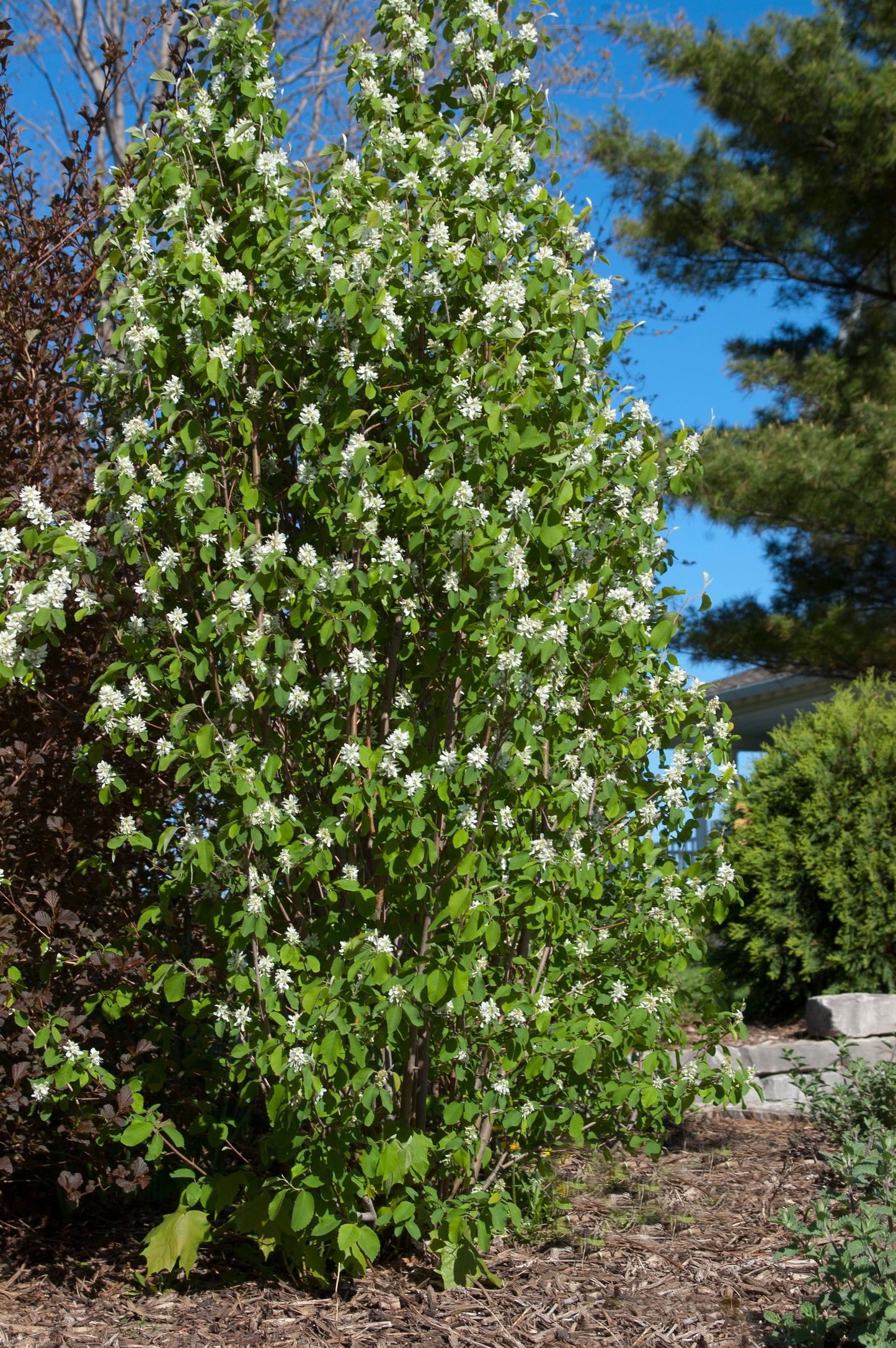Pocatello Greenhouse
Standing Ovation Serviceberry
Standing Ovation Serviceberry
The Standing Ovation serviceberry is a native American plant that can thrive throughout the United States. In the spring, the shrub will bloom with an extensive range of white flowers that are reminiscent of dogwoods. The summer season allows the bush to develop edible berries with a taste similar to blueberries. These fruits can be used in preserves, eaten fresh, dried like raisins, or pressed for juice. Once the fall season comes around, the round leaves will start to change into red and orange hues to give your landscape a spectacular autumn show.
Category: Fruiting Shrubs
Botanical name: Amelanchier alnifolia ‘Obelisk’
Height: 12-15
Width: 4-6
Water requirements: Low
Sunlight: Full sun
Lowest hardiness zone for growth: 2
Shape: upright
Growth rate: medium to fast
Bloom time: May
Level of maintenance: Low
Potential diseases: The common serviceberry may be infected by many of the diseases common to plants in the Rosaceae family, though damage to the plant is mostly cosmetic8. Diseases that may infect the common serviceberry can consist of leaf spot, rust, or powdery mildew8. Pests that eat away at the bark of the tree include Japanese beetles, spider mites, aphids, and leaf miners3,4. Additionally, the bark of the common serviceberry is very thin and can be easily damaged by machinery8. Environmental damage such as drowning and edema may occur if the soil where this species is growing becomes too water-saturated, leading to rotted roots and bark and blisters on leaves4.
Category: Fruiting Shrubs
Botanical name: Amelanchier alnifolia ‘Obelisk’
Height: 12-15
Width: 4-6
Water requirements: Low
Sunlight: Full sun
Lowest hardiness zone for growth: 2
Shape: upright
Growth rate: medium to fast
Bloom time: May
Level of maintenance: Low
Potential diseases: The common serviceberry may be infected by many of the diseases common to plants in the Rosaceae family, though damage to the plant is mostly cosmetic8. Diseases that may infect the common serviceberry can consist of leaf spot, rust, or powdery mildew8. Pests that eat away at the bark of the tree include Japanese beetles, spider mites, aphids, and leaf miners3,4. Additionally, the bark of the common serviceberry is very thin and can be easily damaged by machinery8. Environmental damage such as drowning and edema may occur if the soil where this species is growing becomes too water-saturated, leading to rotted roots and bark and blisters on leaves4.

